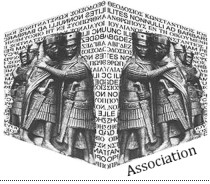Luca Cadili, ‘In tunica Iouis: Sidoine Apollinaire et les antiquités romaines’, RET 12 (2022-2023) 39-50.
Access via RET contents
Abstract: In the panegyrics in honor of Avitus, Majorian, and Anthemius (carm. 7, 5, and 2), Sidonius Apollinaris gives detailed accounts of the consular robe the three emperors donned on different official occasions, proving a strong acquaintance with the ceremonies and the rituals of power involved in the imperial court protocol of his time. Such a familiarity has enabled him to retrace even the remotest history of this topic, as can be inferred from his reworking of a passage from Juvenal, which provides us with a most vivid and thorough description of the Roman triumphator’s garments and the celebration of his victory, as occurring in the Republican and early Imperial Age. By doing so, in a very original way, Sidonius shows that the military cloak the late antique consuls used to wear to make known their social status, the trabea or palmata, had indeed a very revered ancestor, having stemmed from the tunica palmata, the palm decked-robe in which, since the oldest times, victorious generals were shrouded on the very day their triumph was solemnized by their fellow citizens.

